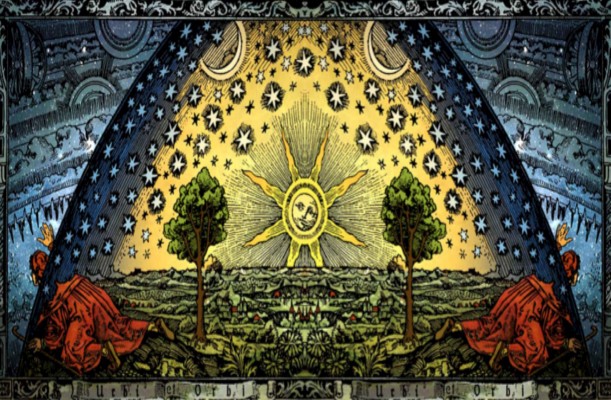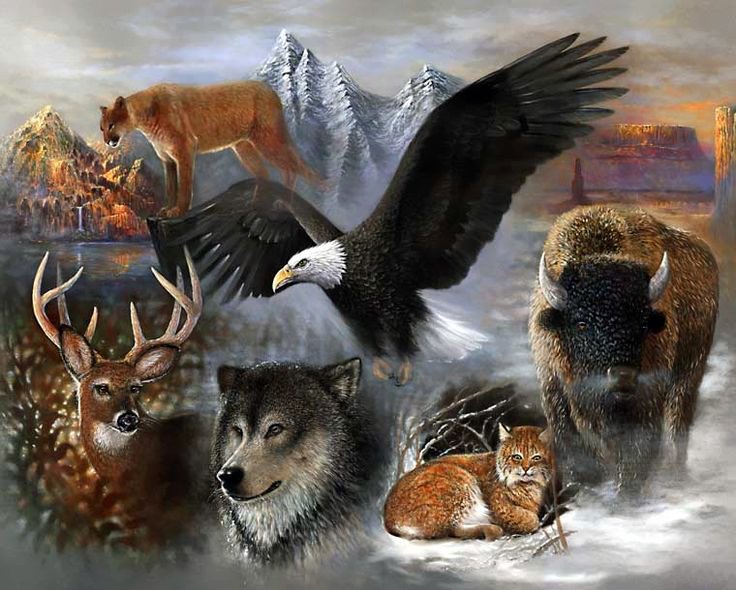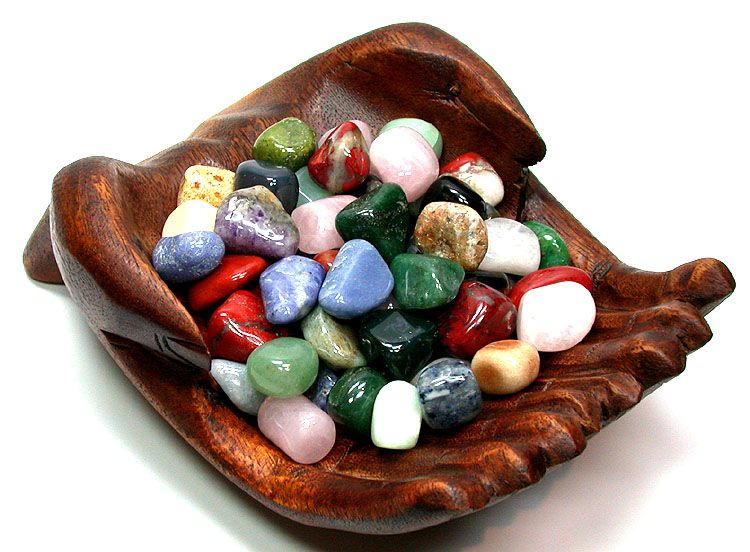Gnosticism Part II
- Details
- Written by Sofia Falcone

Gnosticism has caused so much controversy due to the fact dogmatic religions quite adamantly oppose it. Gnosis is a Greek word meaning “Knowledge”; not an ordinary state of knowing, rather an integrative knowledge which requires a particular state of consciousness–this particular type of knowledge aligns mind, body and spirit; you don’t just want to believe but you know…there is a big difference there.
Gnosis allows a person to transcend Maya (the illusion); seeing and feeling past the superficiality of our 3D world and our limited physical senses. This type of knowledge cannot be attained through rationalization or the use of our intellect alone, instead it opens one up to experience; as such, the Initiate may test and feel, hence incorporating such experiences at a cellular and spiritual level…coming to Know.
Gnosis is best understood through Plato’s cavern allegory. Plato used this allegory to better explain his thoughts and learnings on reality. Similarly to those who followed; Nietzsche, Carl Jung, Freud and others; Plato believe what we perceive as reality is not reality or at least not the whole reality, but a mere fraction or shadow of our actual reality.
…imagine a cave where people have been imprisoned from childhood, but not from birth. These prisoners are chained so that their legs and necks are fixed, forcing them to gaze at the wall in front of them and not to look around at the cave, each other, or themselves. Behind the prisoners is a fire, and between the fire and the prisoners is a raised walkway with a low wall, behind which people walk carrying objects or puppets “of men and other living things”. The people walk behind the wall so their bodies do not cast shadows for the prisoners to see, but the objects they carry do “just as puppet showmen have screens in front of them at which they work their puppets”.
The prisoners cannot see any of what is happening behind them, they are only able to see the shadows cast upon the cave wall in front of them. The sounds of the people talking echo off the walls, and the prisoners believe these sounds come from the shadows. The allegory suggests that the shadows are reality for the prisoners because they have never seen anything else; they do not realize that what they see are shadows of objects in front of a fire, much less that these objects are inspired by real things outside the cave which they do not see.
The fire, or human-made light, and the puppets, used to make shadows, are done by the artists. Plato, also indicates that the fire is the political and religious doctrines taught in a nation state. The artists use light and shadows to teach the dominant doctrines of a time and place.
Also, few humans will ever escape the cave. This is not some easy task, and only a true philosopher, with decades of preparation, would be able to leave the cave, up the steep incline. Most humans will live at the bottom of the cave, and a small few will be the major artists that project the shadows with the use of human-made light.
Plato then supposes that one prisoner is freed. This prisoner would look around and see the fire. The light would hurt his eyes and make it difficult for him to see the objects casting the shadows. If he were told that what he is seeing is real instead of the other version of reality he sees on the wall, he would not believe it. In his pain, Plato continues, the freed prisoner would turn away and run back to what he is accustomed to (that is, the shadows of the carried objects). He writes “… it would hurt his eyes, and he would escape by turning away to the things which he was able to look at, and these he would believe to be clearer than what was being shown to him.”
Plato continues: “Suppose… that someone should drag him… by force, up the rough ascent, the steep way up, and never stop until he could drag him out into the light of the sun.” The prisoner would be angry and in pain, and this would only worsen when the radiant light of the sun overwhelms his eyes and blinds him.
“Slowly, his eyes adjust to the light of the sun. First he can see only shadows. Gradually he can see the reflections of people and things in water and then later see the people and things themselves. Eventually, he is able to look at the stars and moon at night until finally he can look upon the sun itself. Only after he can look straight at the sun “is he able to reason about it” and what it is (See also Plato’s analogy of the sun, which occurs near the end of The Republic, Book VI)
Plato continues, saying that the freed prisoner would think that the world outside the cave was superior to the world he experienced in the cave and attempt to share this with the prisoners remaining in the cave attempting to bring them onto the journey he had just endured; “he would bless himself for the change, and pity [the other prisoners]” and would want to bring his fellow cave dwellers out of the cave and into the sunlight.
The returning prisoner, whose eyes have become accustomed to the sunlight, would be blind when he re-enters the cave, just as he was when he was first exposed to the sun. The prisoners, according to Plato, would infer from the returning man’s blindness that the journey out of the cave had harmed him and made him “mad”, and that they should not undertake a similar journey. Plato concludes that the prisoners, if they were able, would therefore reach out and kill anyone who attempted to drag them out of the cave.
Like Plato’s allegory, Gnosis teaches us about a different reality which needs to be experienced in order to be understood; one cannot get there through blind faith meant to relief one of personal responsibility. Gnostics believe most people choose blind faith or a superficial life style over a deeply personal relationship with the divine, because we are afraid of leaving behind our shackles which have become our personal safety blanket, and which provide us with a sense of “normalcy” without much work needed from our part; as such when someone chooses the path less travelled–the Gnostic path ( alchemical, philosophical path or shadow work)–we tend to judge such a person as “mad” or “misfit”, and will often treat him like an outcast. The reason such conduct takes place, is because we do not like our preconceived “safe” ideas to be challenged; even if such beliefs or dogmas contradict one another or are damaging to the essence of ourselves.
Plato had great respect for Gnostics (“those who know”)–Gnostics beliefs were implemented more and more in Greece and other parts of the world by Esoteric Schools after the death of Plato. Esoteric should not be confused with Exoteric (the first looks in, the second looks out). Plato’s and Hermetic teachings, consider Gnosis the corner stone to start understanding transcendental reality while learning about our true essence.
In Hermetic teachings we learn the importance of learning to discern the truth of transcendental reality; for in there all elements of life are connected and intensified. There is divine source which can only be experienced when we choose to face the abyss, transcending Maya. This divine source was not a deity; from it all things were born as it experienced itself.
Old Esoteric schools taught that to find the divine, we need to awaken to the fact that what we call “real” life is a dream within a dream, and that dream was never an illusion but the truest essence of reality. This is why over the centuries sages taught about the need to see past our own blindness and hear past our preconceived ideas, dogmas or psychological/sociological programming; they were not teaching to follow blindly but rather to experience…to come to know.
In older times, Gnosis was a very important part of life and culture for people back then, were deeply interested in knowing and less afraid of confronting themselves. The path of esoteric/philosophical knowledge allows the Initiate to use his mind to navigate life’s duality while expanding his heart; in that way he was able to better feel and connect with Divine Source. Unlike modern thinkers, Gnostics understood the rational mind was but a tool, and only trough balance–not the negation of one or the other–could one experience or get closer to the truth of our reality; allowing us to see past the walls, masks and shells which most people use to deflect transcendental reality or the knowing of self.
Unlike dogma, Gnosis does not teach about superficial concepts of right or wrong for “the heart of every man is unique” but about motivation and the honoring of our own uniqueness. Oddly enough in facing the abyss or what artists refer to as “sweet madness“; where all inspiration originates; and in embracing our shadow, honoring our light and our darkness, do we get to experience the divine in us and remain connected to others…like leaves or roots of a tree: each different yet connected.
Because Gnosis is pure knowledge, it is deeply connected to Magick (I spell it like this, because the word magic is mostly associated with superficial sorcery while magick is mathematically connected with pure science and alchemy). Gnosis then, is connected to the highest of magicks…Alchemy. When an alchemical magician enters a transcendental state, the superficial differences of reality and masks people use, tend to dilute or vanish. This state of deep meditation helps the witch or magician transcend the illusion of time–something yogis and monks have often testified about.
This ability to see past the veil or “go beyond time“, is one which scientists have studied and witnessed. The ability to connect with the divine within, is what gives one the ability to organically connect with the divine outside of us; opening our chakras and channels, which allows us to develop our own abilities, and we learn to see into the hearts of those who surround us. One does not need to be a witch to practice Gnosis or alchemy; that is simply a label given to anyone who is knowledgeable and practices alchemy.
Although Plato’s teachings as well as Hermetic teachings, tried to expand on the concept of transcending our superficial reality; it was Gnostics who truly made “pure knowledge” the axis for their way of life, philosophy and the study of the occult (the occult simply means “that which can’t be seen but it’s there”— nothing to do with simpleton ideas of voodoo or other nonsensical ideologies meant to scare people from looking in, or understanding what Gnosis is really about).
Although the word Gnostic was put together around the 19th century, its philosophy is ancient and transcends any modern religion. Unlike religions, Gnosticism sees the world and its philosophies as a whole; pieces of a bigger puzzle; which can only be understood when looking at all pieces instead of dividing or compartmentalizing.
If we study ancient history, beliefs and myths, we get a united but very much different idea about the origin of our world, than the one currently taught by young religions. Gnostics, did not and do not recognize the authority of the God of the old testament, or the power of its churches; needless to say this was cause for them to be persecuted (to understand more about their history please read my article HERE). A Gnostic seeks to understand, honor and unite with his own divinity; only in doing so, can one begin to feel and understand the source of it all…
“…in the beginning was the primordial source, from which everything emanated. Eons began to emanate that formed realities; some higher energetically than others. As they were moving away from the primordial source, these eons formed more chaotic or darker realities. One of those eons is wisdom, which Christ called his counterpart. According to them, wisdom wanted to return to the source, but because she was unable to do so, she was trapped in chaos. From that turbulent energy another of malevolent nature was born, one which enslaved wisdom and proclaimed himself God; for he did not want to recognize a higher power or divine source. Gnostics called this false God “the craftsman”, for it created a world similar (but never the same as the original one) in which people were trapped to feed him through constant adoration and the renouncing of their own divinity”
To Gnostics, this false God did not create anything but simply use the divine force already present to put together a whole new world or our physical reality. To Gnostics, human beings were not created by this false God, rather he use their divine spark and trapped it in matter….our bodies. These concepts can be looked at from a mythological, spiritual, psychological, philosophical and allegorical perspectives; which are really what define our beliefs. Although they can be looked at from various angles and like anything else one can try to dispute them, one fact remains constant….we are here, and we are more than just a physical being. We know this at a cellular level, hence our need to want to belong, to find something greater than ourselves.
Perhaps if nothing else, Gnosis can help us accept ourselves, and own our own divinity without caging it within dogmatic boxes nor abusing ourselves. Perhaps in taking the only journey worth taking–the journey within; with an open mind and the discipline (not dogma) required to do the work; we will find who we really are and own it without false ego or false modesty, but in all our splendor…with all our light and our darkness, for both are primordial and required to maintain balance. Dogma says “who are you to see yourself as divine?” Gnosis says “Who am I not? For out of divine source I was born and divine is what I am”.

Sofia Falcone
I passionately believe one person can make a difference. I write from my own experiences and interests. It is my greatest hope that by writing about my own challenges and hopes, others may feel inspired to believe more in their inner power and to fully embrace themselves.
Reprinted on crystalwind.ca with written permission from Sofia Falcone.
Source here
© Copyright 2022 CrystalWind.ca
Liked this article? Dive deeper into personal growth and wellness! Check out CrystalWind.ca for spiritual wisdom or explore AromaWorx.ca for natural well-being tips. Spread the positivity—share this with friends on their happiness journey!
Let’s Chat! Drop Your Thoughts Below! ![]()
Latest Articles

Imagine a world of inspiration and healing, free for all—made possible by YOU!
Donate Now—Ignite the Magic at CrystalWind.ca!

Epilepsy - Finding A Cure
Your donation can make a difference!
Help us find a cure – donate now!
Unlock Your Light: Join Lightworkers Worldwide on CrystalWind.ca!
Articles: Gnosticism
Follow Us!
Featured This Month
Sun in Virgo
An Overview of Sun Sign Characteristics for Virgo The ruler of Virgo is Mer... Read more
The Vine: September 2nd - September 29th
The Autumnal Equinox ( Alban Elfed ) Celtic Symbol : The White Swan Read more
Virgo Mythology
The Virgo Myth In all of constellation mythology, few legends are as misund... Read more
Watermelon Tourmaline
Synonym: Rainbow Tourmaline The watermelon tourmaline is a rare variety t... Read more
Mabon Magic: Ideas For Fall Decoration And R…
Welcome (almost!) to Fall! We’re turning the Great Wheel once again, toward ... Read more
Crystals for Virgo
During harvest time, when the seasons begin to transition from summer to fall,... Read more
Mabon in Modern Times: Fresh Takes on the Au…
The Mabon season begins somewhere around the 21st-22nd of September and cont... Read more
Peridot: The Healer's Stone
Peridot has been used as a Power Stone for centuries. Peridot fosters emotio... Read more












































